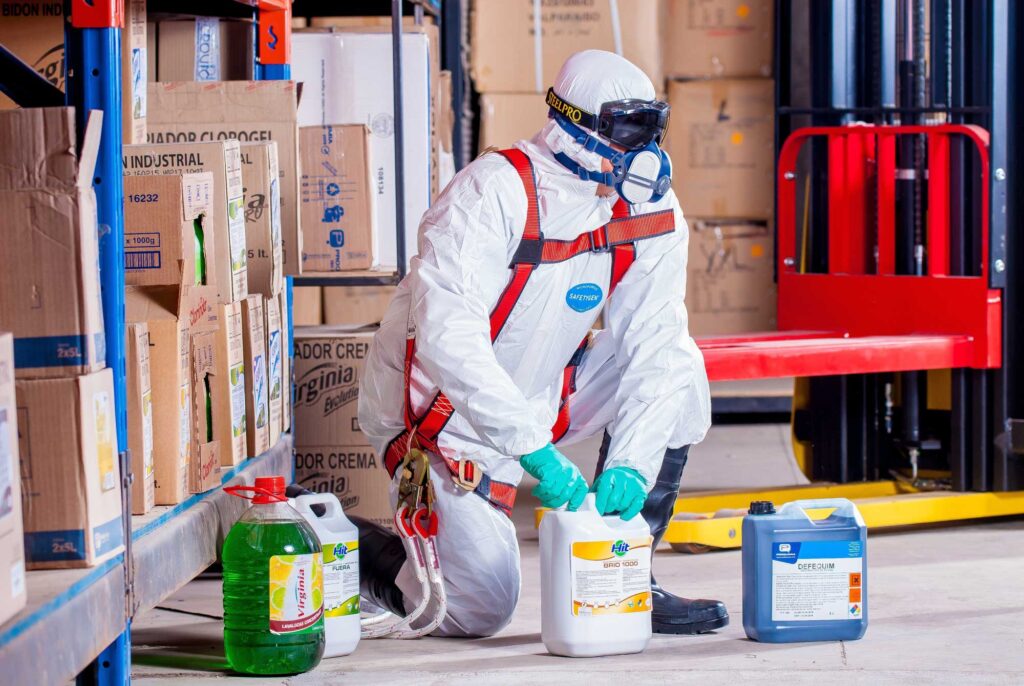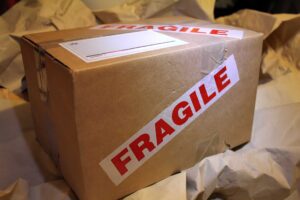Shipping hazardous materials in the United States is a difficult task: obviously, you need your supplies to be delivered, but it is also of the utmost importance to notify the shipping carrier that the materials inside are hazardous.
This guide seeks to empower you to ship hazardous materials: to ship them legally and safely, and not be paralyzed by not knowing where to begin. This is not legal counsel; it is simply a helpful guide and should be treated as such.
How To Ship Hazardous Materials in the U.S.
1. Classify dangerous materials
The first step is to become familiar with the specific hazards your materials pose, if you don’t know already.
The best place to start is the Safety Data Sheet (SDS) of the material. This document is usually included when you purchase a material, but if you can’t find it, you can locate one for a chemically equivalent substance.
Once you find the SDS, identify if the material is dangerous and if there are special handling procedures for the substance. Most Safety Data Sheets also have a transportation information section, which, according to the OSHA website, “provides guidance on classification information for shipping and transporting of hazardous chemical(s) by road, air, rail, or sea. The information may include:
- UN number (i.e., four-figure identification number of the substance)
- UN proper shipping name
- Transport hazard class
- Packing group number, if applicable, based on the degree of hazard
- Environmental hazards (e.g., identify if it is a marine pollutant according to the International Maritime Dangerous Goods Code (IMDG Code)).
- Guidance on transport in bulk (according to Annex II of MARPOL 73/78 and the International Code for the Construction and Equipment of Ships Carrying Dangerous Chemicals in Bulk (International Bulk Chemical Code (IBC Code)).
- Any special precautions which an employee should be aware of or needs to comply with, in connection with transport or conveyance either within or outside their premises (indicate when information is not available).”
This transportation information section, however, is optional in the SDS.
2. Know the regulations
In the United States, the Department of Transportation and Federal Aviation Administration are the regulating bodies for shipping hazardous materials. These entities have established standards and categories that must be paid attention to in order to comply with the Code of Federal Regulations, or CFR.
The CFR outlines a hazardous materials table for classifying the level of danger of a material. Right after the table, a corresponding hazardous materials regulations lays out the laws for handling these materials.
These two sections are long and rather confusing, but it is worthwhile to sit down and learn to work with them, especially if you will be shipping often. Proper knowledge of the applicable laws will create more freedom and flexibility in your business, and it will save you time and money in the long run.
Any assessment of which regulations apply to your materials should be done by a qualified hazmat employee at your organization. A hazmat-qualified employee is someone who is trained properly according to another CFR statute. All people who are responsible for handling, shipping, or transporting hazardous materials in an organization should be trained.
3. Package and label goods properly
Once your hazmat-qualified employee has assessed the level of hazard of the materials, he or she will also need to identify the allowable quantities of the material in each parcel, the labels and packaging required, and the packing group of the material.
A subpart of the U.S. Code of Federal Regulations lays out allowable packaging for many hazardous materials available here, and a more general section of the CFR sets the groundwork for packaging that fits requirements for the rest of the hazardous materials here. Packing groups are Levels I, II, and III, and they show the general danger of the materials in the packaging. Level I indicates minor danger, and Level III is the most dangerous.
If your dangerous materials fall into any of these categories, take them seriously because they are legally required to pass the following performance tests:
- Drop Test, CFR Code 178.603
- Leakproofness Test, CFR Code 178.604
- Hydrostatic pressure Test, CFR Code 178.605
- Stacking Test, CFR Code 178.606
- Cooperage Test for Bung-type Wooden Barrels, CFR Code 178.607
- Chemical Compatibility Test for Plastic Receptacle, CFR Code 178.608
- Vibration Standard, CFR Code 173.24a(a)(5)
All sections must be read to determine the applicable test for container types. If your company is beginning to manufacture the packaging, check out CFR 178.601 to see what frequency and by what methods your packaging has to be tested.
Once the proper packaging and federal categories are determined, you must obtain the appropriate hazard communication for the packaging. Examples of hazard communication include markings, labels, and shipping paper/shippers’ declarations. The shipping label requirements can be found in CFR Title 49, Subtitle B, Chapter I, Subchapter C, Part 172, Subpart C. On most shipments, the proper shipping name, the UN number, and the shipper or consignee’s name and address are required to be marked on the package on the same surface as the label.
As explained in our post on how to package fragile equipment for shipping, it is also good to have multiple shipping labels, one for outside the packaging, and one or more for inside the packaging in the event that the label on the outside of the package gets damaged or removed.
4. Finally, ship the goods
If you managed to get this far, you are on the home stretch. Now that you know how to ship hazardous materials, all that’s left to do is ship the parcel. If everything goes as planned, your shipment will arrive without incident.
It is worth noting that most major shipping companies also have their own policies on shipping hazardous items that might require extra steps beyond what is legally required, but this is dependent on the company. FedEx’s policy is here, and UPS’s policy can be found here.
If this whole process sounds confusing to you, that’s because it is genuinely complex. Lab Liquidators seeks to provide value to our customers by handling the process for them when they seek to liquidate their equipment or supplies.
Instead of selling excess equipment at auction and then having to ship the equipment or supplies, we will come to you wherever you are in the contiguous United States, and remove all unneeded equipment quickly.
Get in touch with our team to let us know how we can help you earn money for your surplus equipment and get it removed easily.







